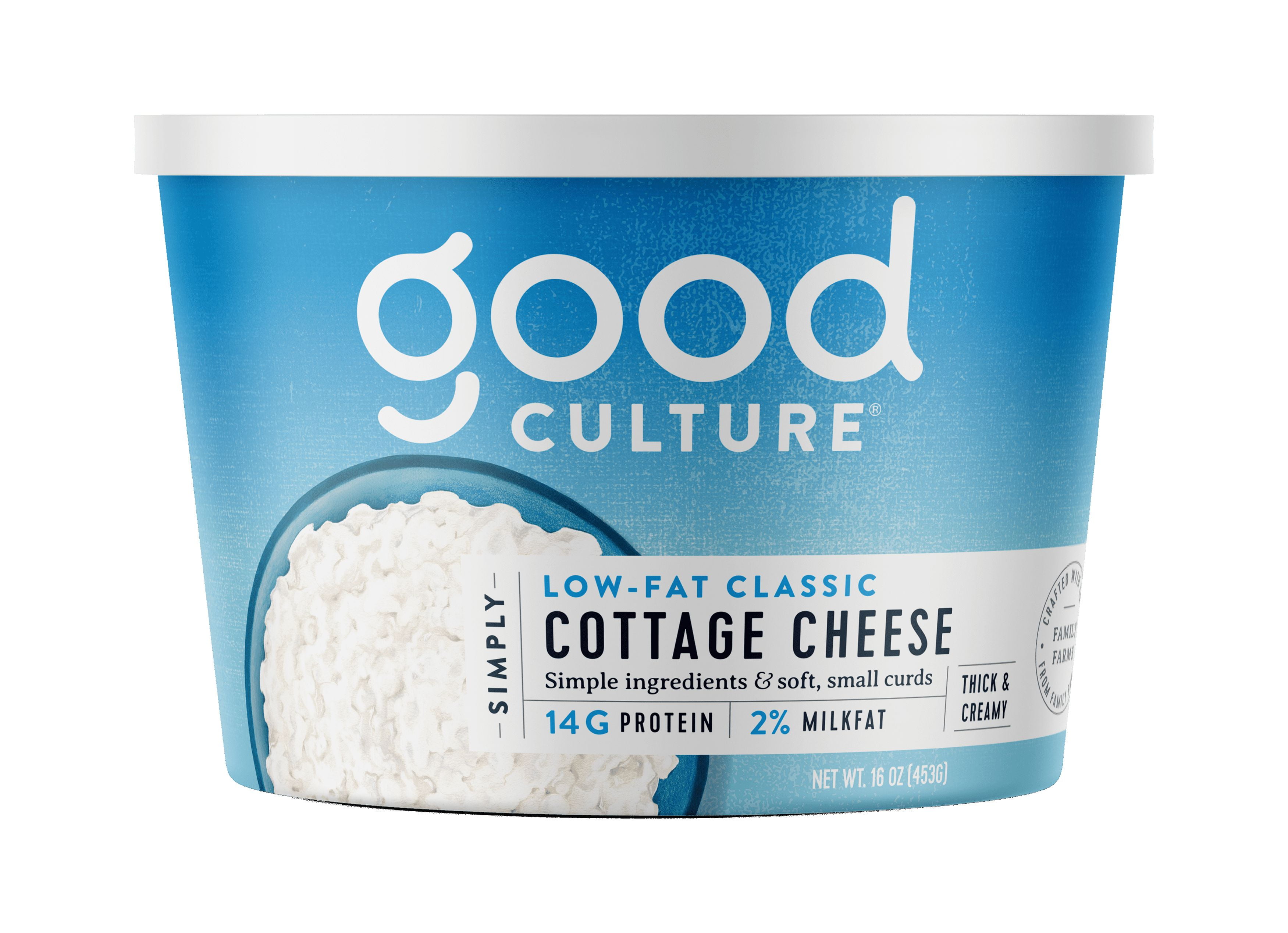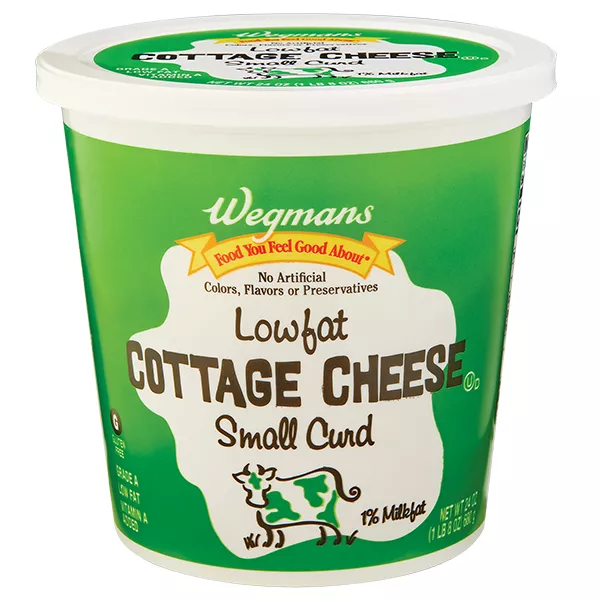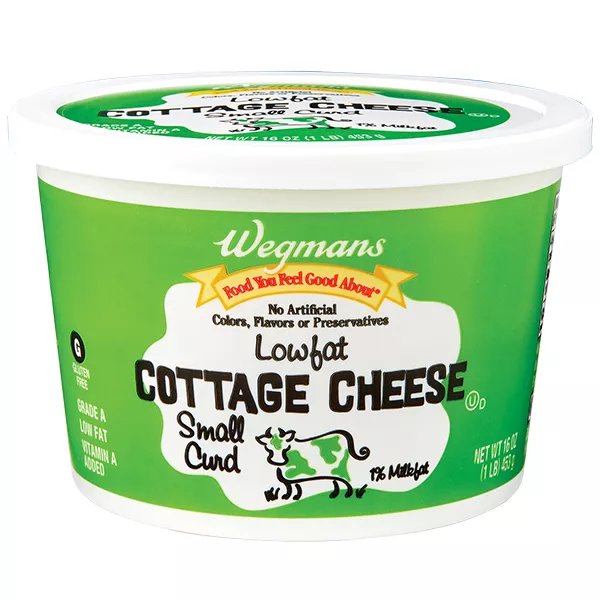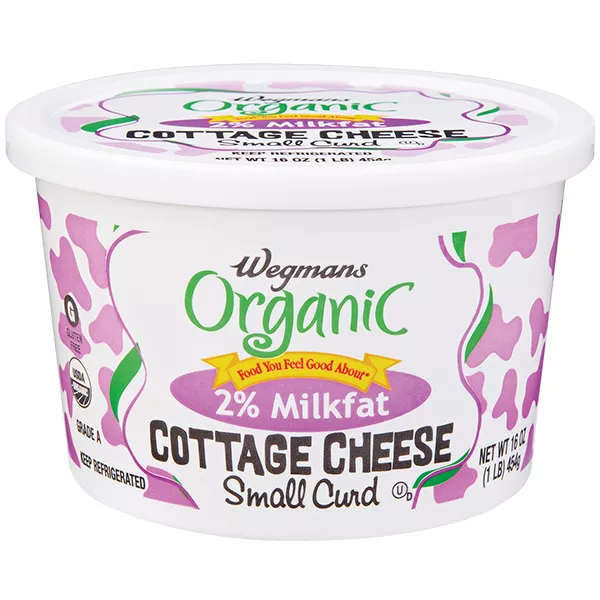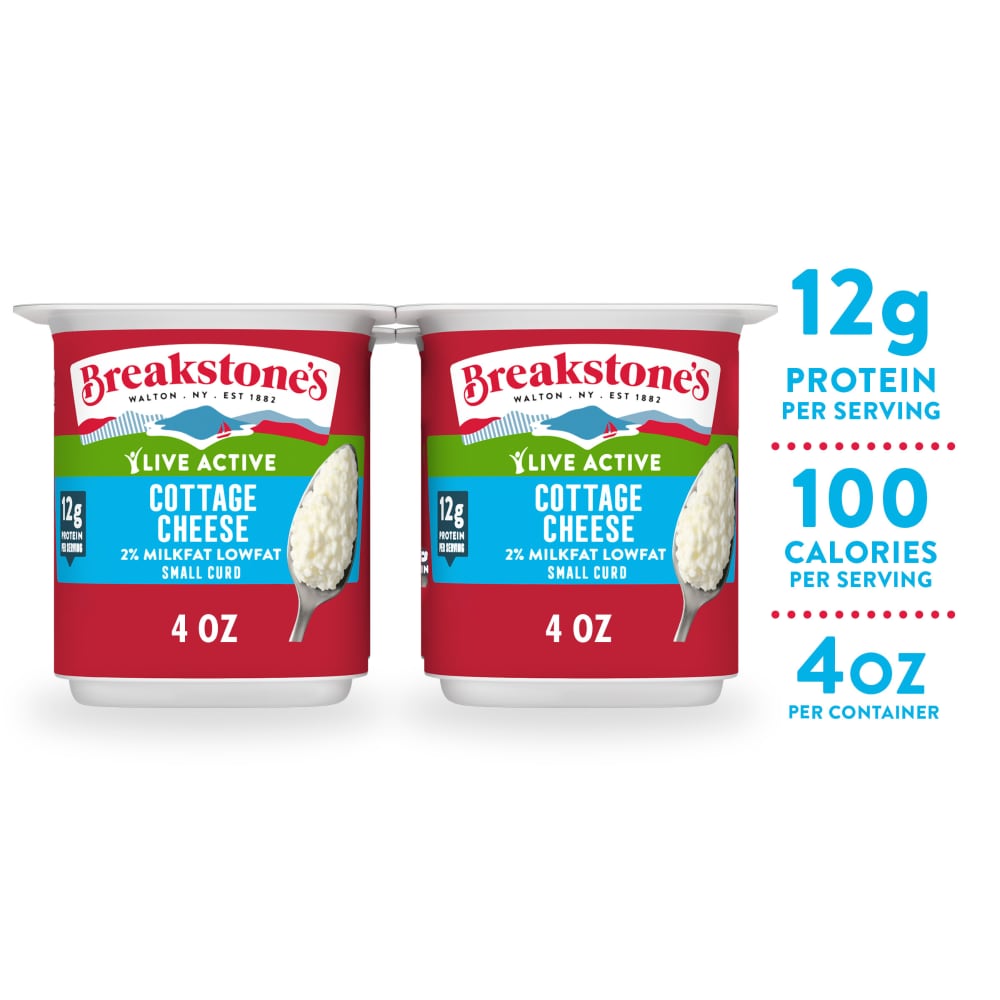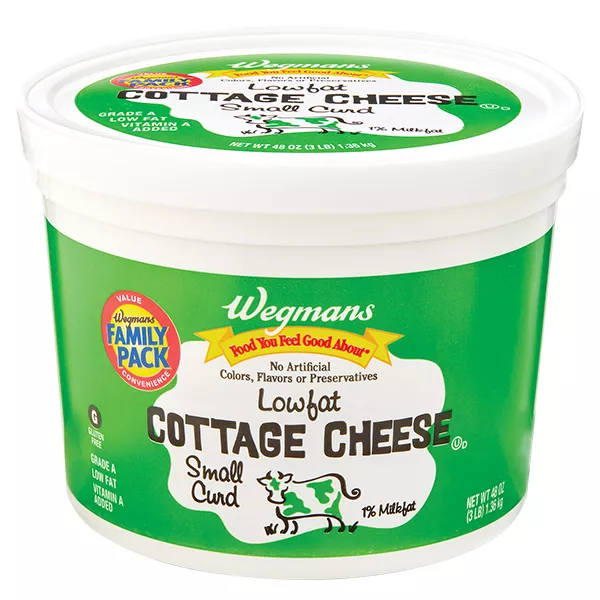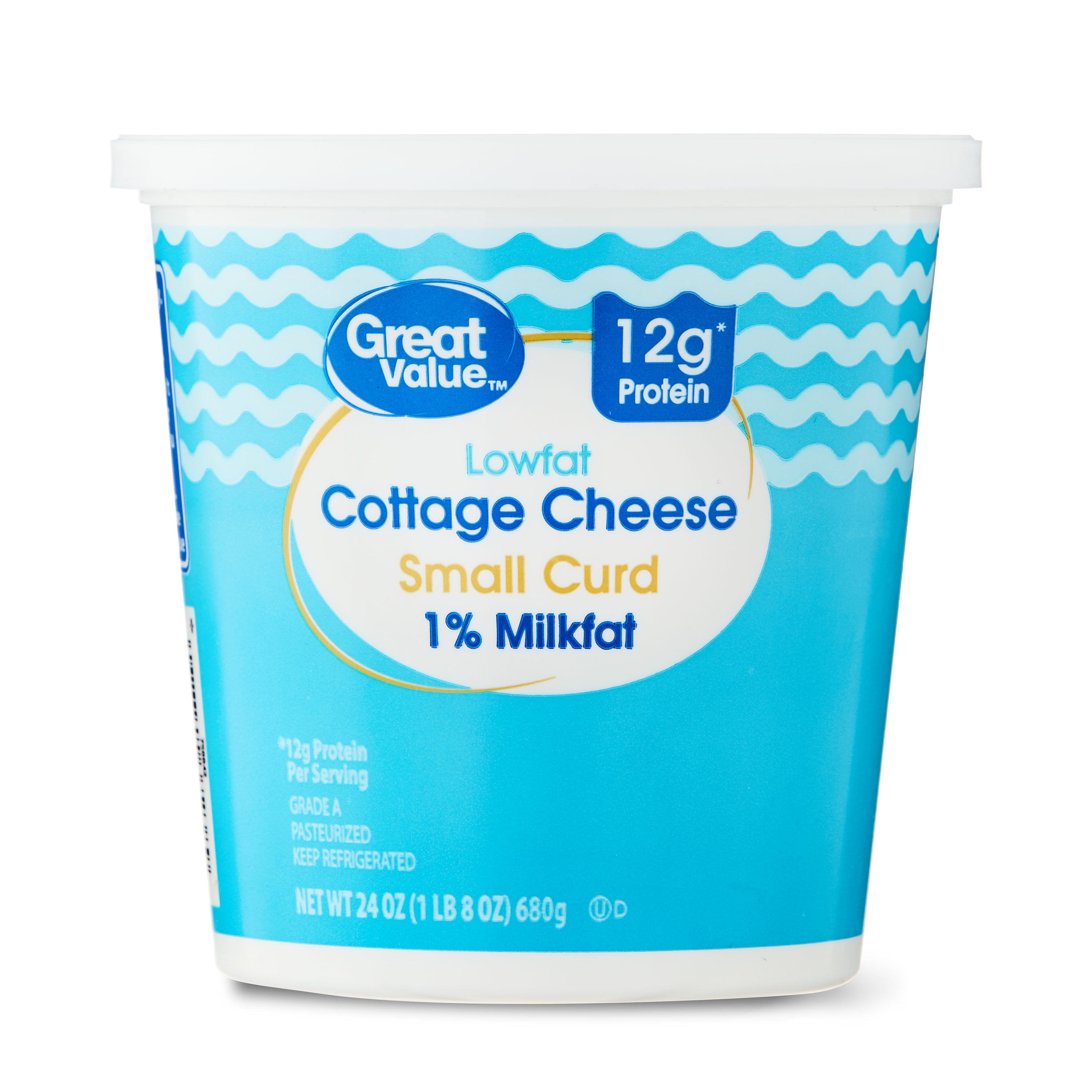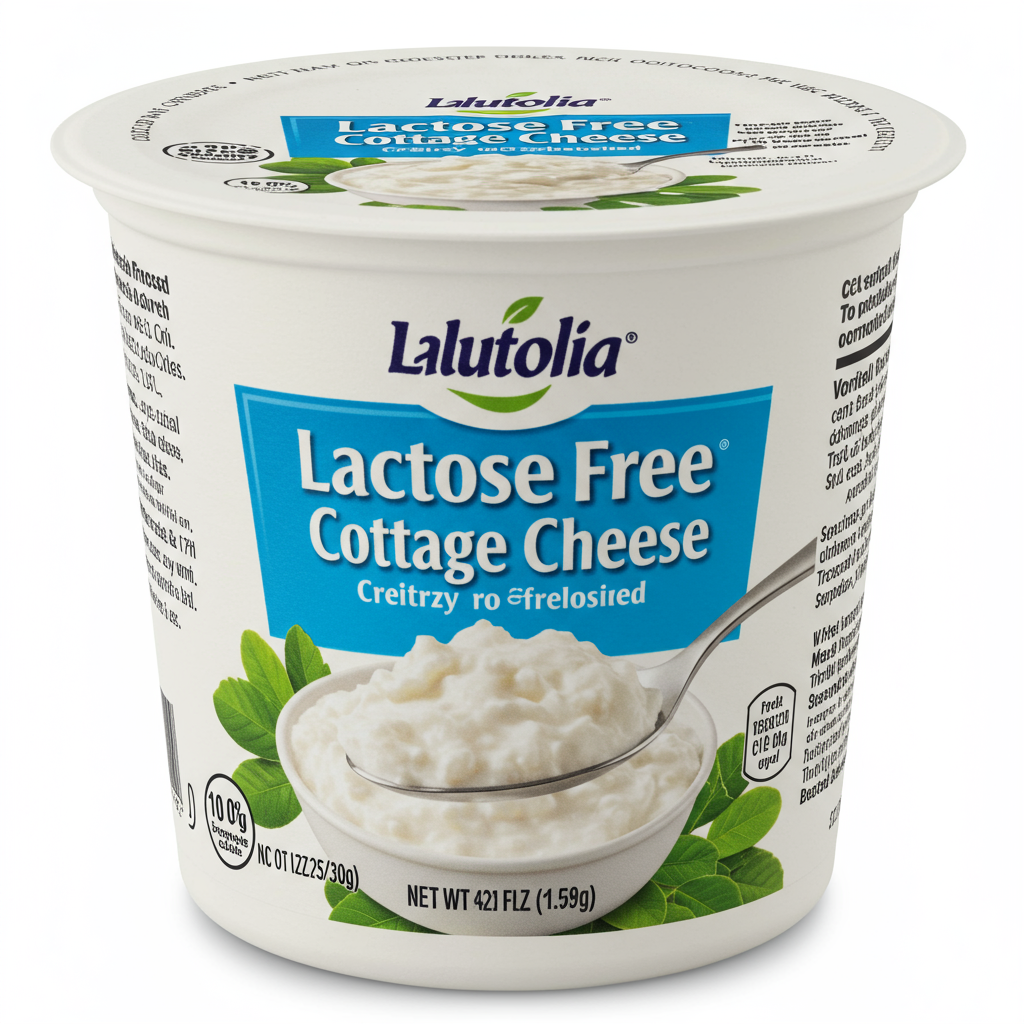Lowfat Cottage Cheese
Low-fat cottage cheese is a type of dairy product made from the curds of cow's milk, with minimal fat content. It is characterized by its lumpy, slightly moist texture and mildly tangy flavor, resembling that of regular cottage cheese. This cheese is an ideal dietary choice for those who seek a healthier, low-fat, and high-protein source of nutrients among dairy products.
Commonly used as a breakfast or snack option, low-fat cottage cheese is extremely versatile in the culinary world. It can be consumed on its own or paired with fruits, vegetables, or whole grains. Additionally, it serves as an excellent ingredient in a variety of recipes, such as salads, dips, and even baked goods, while providing multiple health benefits without excessive fat or calories.
32%
CARBS
5%
FAT
63%
PROTEIN
715 Lowfat Cottage Cheese Products
Good Culture Cottage Cheese, Low-Fat, Classic
Wegmans Lowfat Small Curd Cottage Cheese, 1% Milkfat
Wegmans Lowfat Small Curd Cottage Cheese, 1% Milkfat
Wegmans Organic 2% Milkfat Small Curd Cottage Cheese
Breakstone's Live Active Lowfat Small Curd Cottage Cheese with 2% Milkfat, 4 ct Pack
Friendship Dairies Cottage Cheese, Small Curd, 1% Milkfat, Low Fat, Everyday Style
Friendship Dairies Cottage Cheese, Low Fat, No Salt Added, Small Curd, 1% Milkfat
Wegmans Lowfat Small Curd Cottage Cheese, FAMILY PACK
Great Value Cottage Cheese Low Fat, Small Curd
Friendship Dairies Cottage Cheese, Small Curd, 1% Milkfat, Low Fat, Whipped
Used In 9 Recipes
Lowfat Cottage Cheese Is Frequently Used With
Lowfat Cottage Cheese FAQ
Low-fat cottage cheese is often misunderstood in terms of its culinary uses. People frequently struggle with how to use it beyond breakfast or as a diet food. The texture can also be off-putting for some. To truly enjoy low-fat cottage cheese and benefit from its nutritional value, one must understand its versatility. The key is to play with contrasting flavors and textures. Try it with fruits like peaches and pineapple for a sweet-savory combination, or with crunchy vegetables like bell peppers and cucumbers for a satisfying snack. For a protein-rich twist, consider adding it to your post-workout smoothie. Creamy and slightly salty, it can also be used in place of ricotta or mascarpone in various recipes.
An interesting trick to enhance its texture is to whip it in a blender or food processor until it's creamy and smooth. Also, mixing it with herbs and spices can significantly enhance its taste and make a quick, protein-rich spread. Yet, many people don't know about these effective cottage cheese hacks. Just remember, heat can cause it to separate, so add it at the end of the cooking process or use in no-cook dishes.
For a healthier dessert, spread it on a slice of whole grain toast topped with a drizzle of honey and sliced banana, or add a scoop to a bowl of sliced strawberries and top with a sprinkle of granola. It's a great way to satisfy your sweet tooth without sabotaging your health.
Can low-fat cottage cheese be used in hot dishes?
Is low-fat cottage cheese a good source of protein?
How to make low-fat cottage cheese creamy?
Does low-fat cottage cheese go well with sweet foods?
Can I use low-fat cottage cheese as a spread?
Is low-fat cottage cheese suitable for lactose intolerant individuals?
Can low-fat cottage cheese be used as a replacement for ricotta or mascarpone in recipes?
Is it healthy to include low-fat cottage cheese in a daily diet?
What are some ideal pairings for low-fat cottage cheese?
How can I improve the taste of low-fat cottage cheese?
Expiration & Storage Tips
When does lowfat cottage cheese expire?
Unopened, lowfat cottage cheese typically lasts for about two weeks past the printed date on the packaging if stored in the refrigerator. Once opened, the product should be consumed within a week for optimal freshness. Freezing lowfat cottage cheese is not recommended as it can severely alter the texture and taste, making it less appeasing, although it's technically possible and can extend its life up to 3 months.
How do you tell if lowfat cottage cheese is bad?
Unpleasant off smells are the first significant sign that cottage cheese has gone bad. It should smell mild and possibly a little bit tangy, but not foul. If you observe any mould growing, this is another unmistakable sign the cheese is spoiled. If it appears dry, or if it has turned yellow or develops a slimy texture, these are also clear indications that the cheese is no longer safe to eat.
Tips for storing lowfat cottage cheese to extend shelf life
• Always store low-fat cottage cheese in the refrigerator, ideally on a shelf rather than the door to maintain a more consistent temperature.
• Be sure to keep the product in its original container or in an airtight container if it's been opened. This not only promotes longer shelf life, but also prevents the cheese from absorbing odors of other food items in the fridge.
• After each use, ensure the lid or seal is tightly closed before putting back in the fridge, as exposure to air can speed up spoilage.
• Never leave the cheese out at room temperature for longer than two hours.
EXPIRES WITHIN
5 - 8
WEEKS
Substitutes
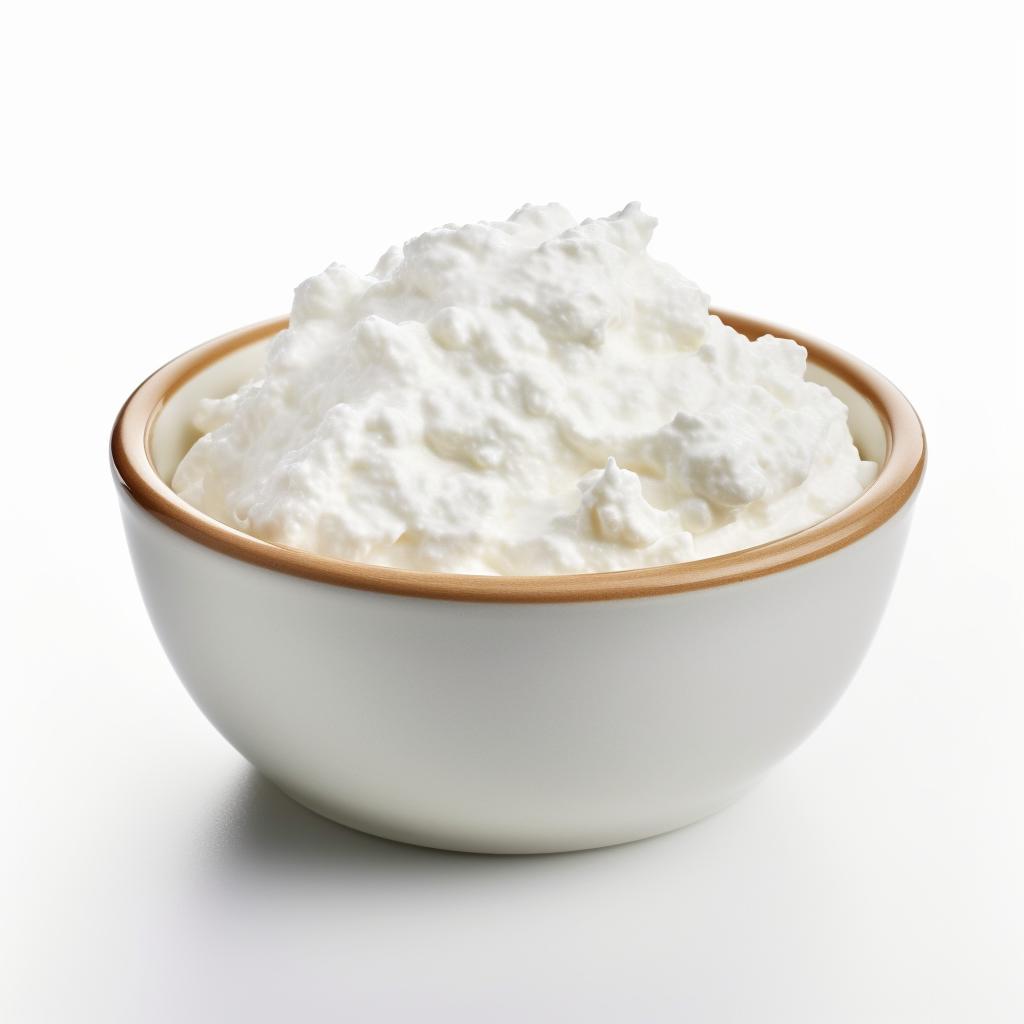
Large Curd Cottage Cheese

Cottage Cheese

Skim Ricotta Cheese

Mascarpone Cheese
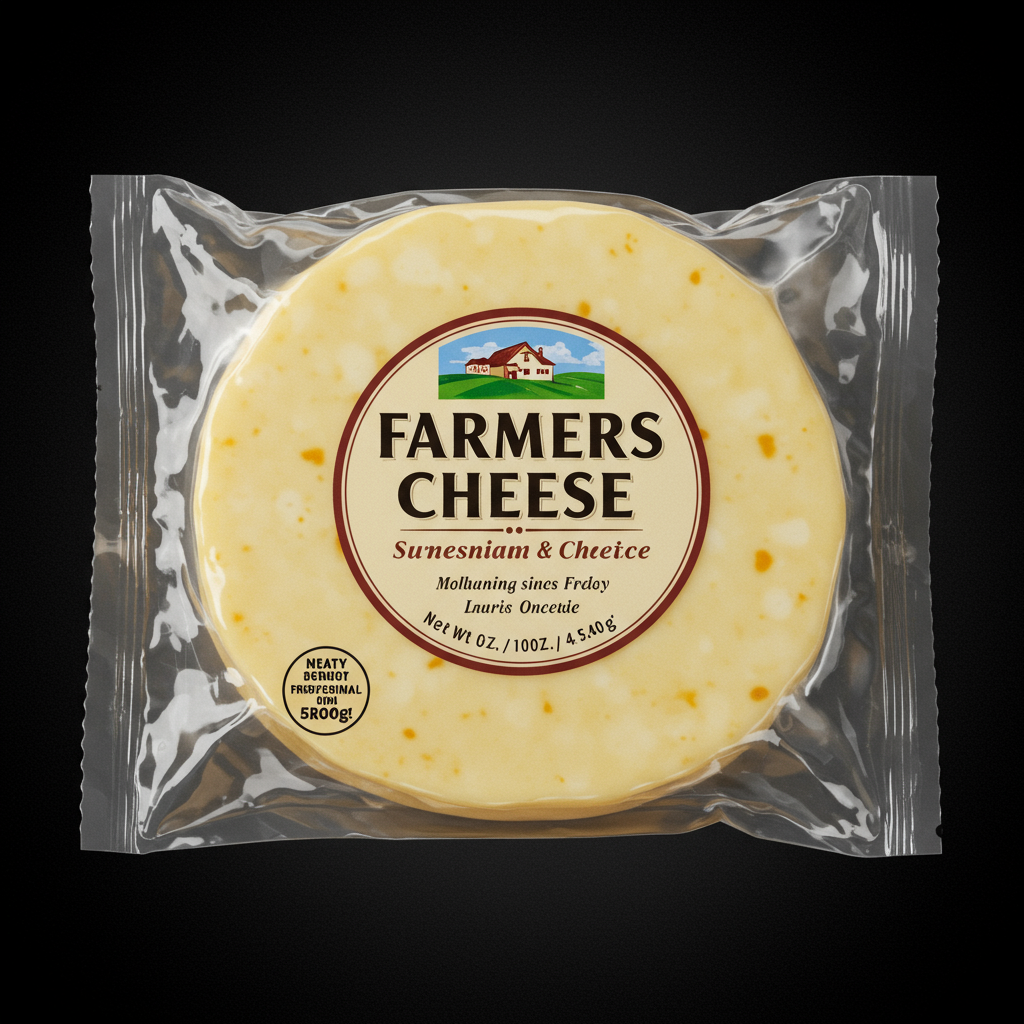
Farmers Cheese
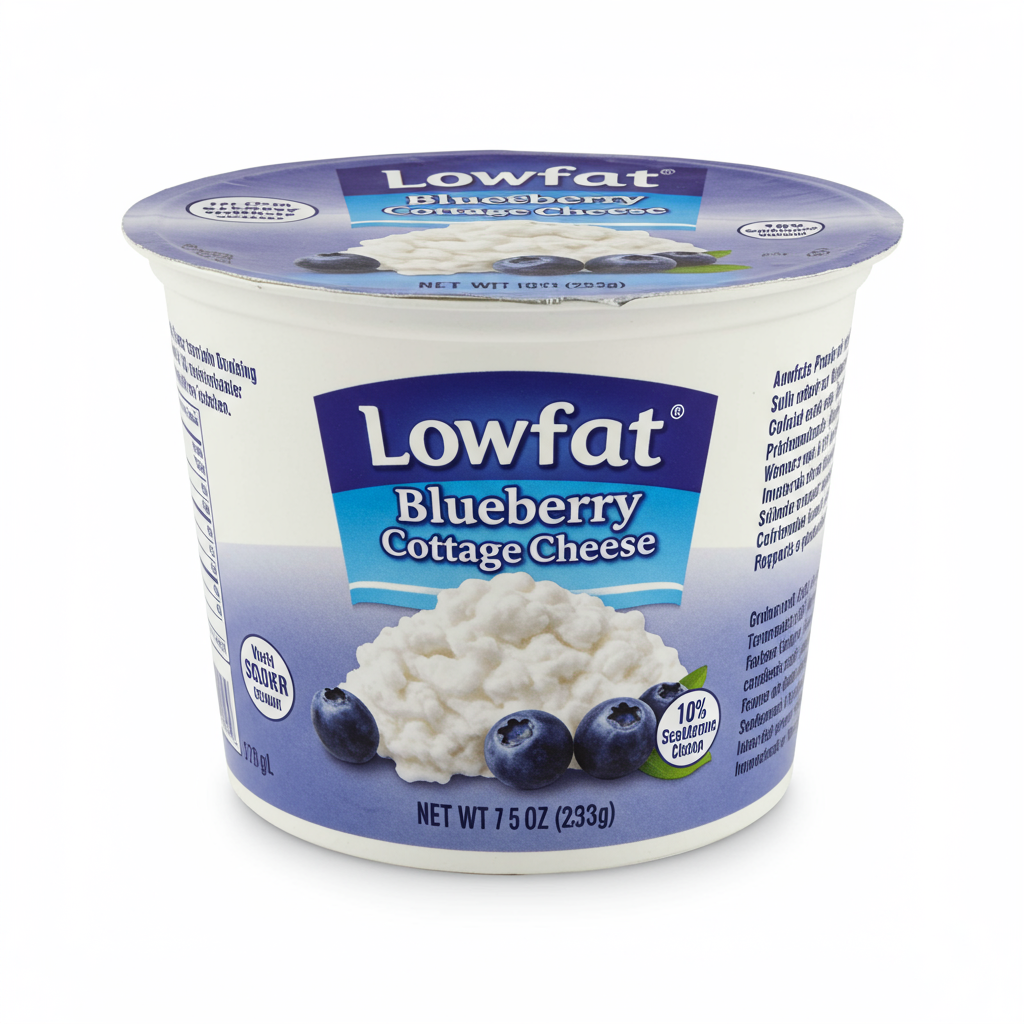
Lowfat Blueberry Cottage Cheese

Peach Cottage Cheese

Pineapple Cottage Cheese

Strawberry Cottage Cheese

Soft Fresh Cheese
See All
Health Info
Macros
12g
CARBS
1g
FAT
24g
PROTEIN
Allowed on these diets
LOW FAT
HIGH CALCIUM
VEGETARIAN
KETO
MEDITERRANEAN
LOW CARB
GLUTEN FREE
Contains these allergens
MILK

